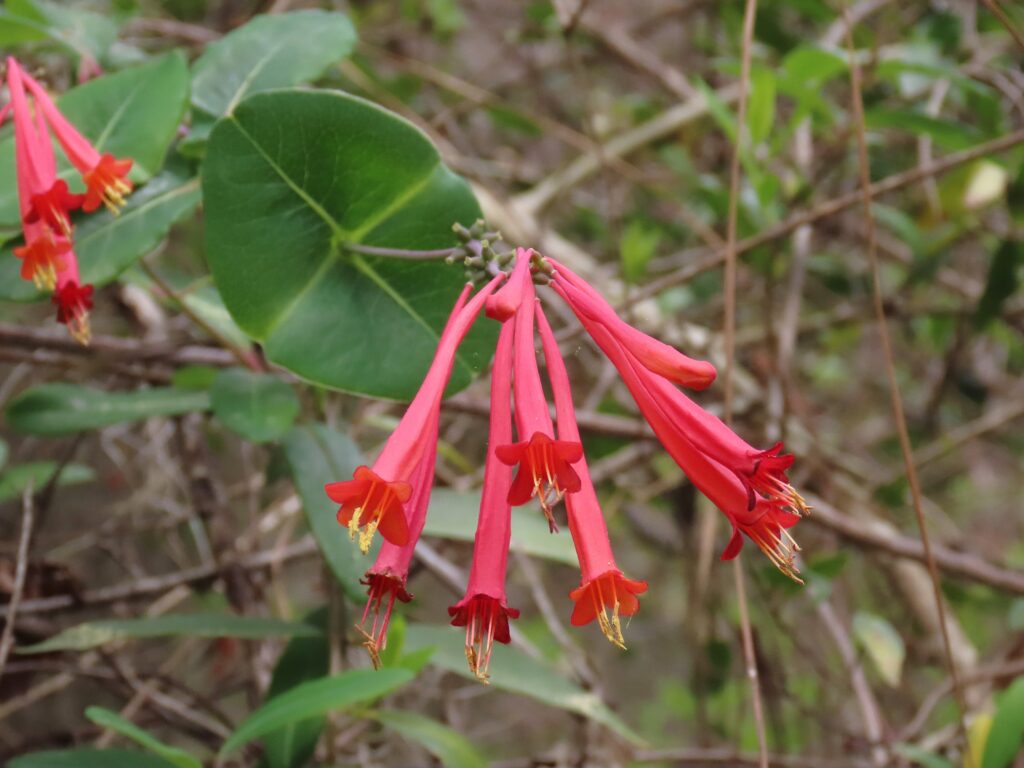




This Flora and Fauna Friday it’s an understory florally whorlly pendulous tubular wildflower, Woodbine or Coral Honeysuckle (Lonicera sempervirens).
Up the Wax-myrtle, over the Yaupon, onto the Sweatleaf, and into the Oak the Woodbine climbs. A peeling varnished bark falls back to make way for the ever reaching pastel-pink of a new year’s growth. Wavy glaucous leaves stretch out in the sun as a stem above pushes onward and upward, leaves pulled tauter to this tower with every story added. Atop the tip the leaves become a dish and a coral crest protrudes. At the summit of this upcoming summer’s solar array blooms this spring’s flowers. A stack of whorls extends its soft red fingers until they burst forth with five-petalled tips dusted with the yellow of pollen.
Woodbine is a perennial woody flowering vine in the Honeysuckle family. It’s found throughout South Carolina and the Eastern United States. It prefers sandy soils and full-sun but is most often found in partial-shade along forest edges, where it has something to climb. It is not a particularly high climber but can topple any shrub or sapling it encounters. Its bark is thin and shaggy and its vines fairly fine. New growth is often tinged in red and leaves have a bluish cast. Leaves are oppositely arranged and become perfoliate, wrapping around the stem, as they near a flower bud. Flowers are long, narrow, coral-red, and bunched together. The blooms peak in April but can continue through summer. A combination perfect for hungry Hummingbirds. The fruit is a small red drupe that is eaten and dispersed by birds. Coral Honeysuckle is an excellent addition to most any backyard garden. It can be trellised to produce shade and provides food for both birds and butterflies.